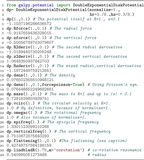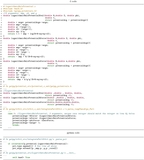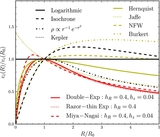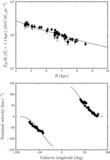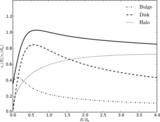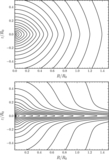Image Details

Caption: Figure 26.
Stellar response of a kinematically warm disk as a function of azimuth to an elliptical disk with an amplitude of 0.05 at R0. An elliptical-disk perturbation ϕ(R, ϕ) = 0.05/2cos 2(ϕ − ϕb) to the potential is slowly grown in an initially steady-state axisymmetric disk with a flat rotation curve and a Dehnen DF with hR = R0/3, hσ = R0, and radial velocity dispersion σR. The difference between the mean radial velocity  , the mean rotational velocity
, the mean rotational velocity  , and the vertex deviation lv with respect to the axisymmetric value is shown (which is only non-zero for the mean rotational velocity). Different curves demonstrate the dependence of the response on σR. While the radial and rotational velocities respond less strongly for σR > 0 than for a cold disk, the vertex deviation is larger and becomes non-sinusoidal.
, and the vertex deviation lv with respect to the axisymmetric value is shown (which is only non-zero for the mean rotational velocity). Different curves demonstrate the dependence of the response on σR. While the radial and rotational velocities respond less strongly for σR > 0 than for a cold disk, the vertex deviation is larger and becomes non-sinusoidal.
Copyright and Terms & Conditions
© 2015. The American Astronomical Society. All rights reserved.




